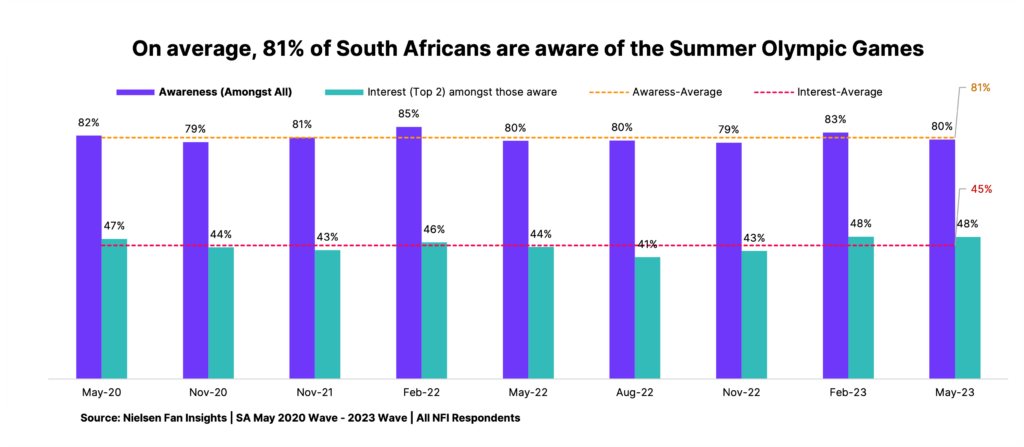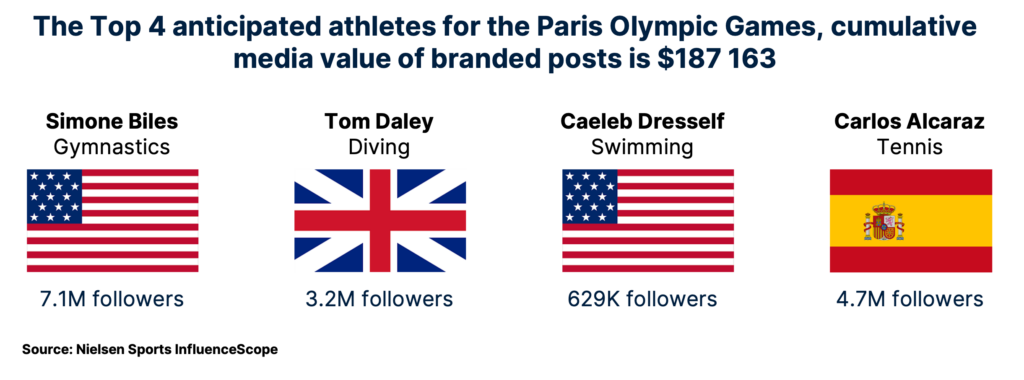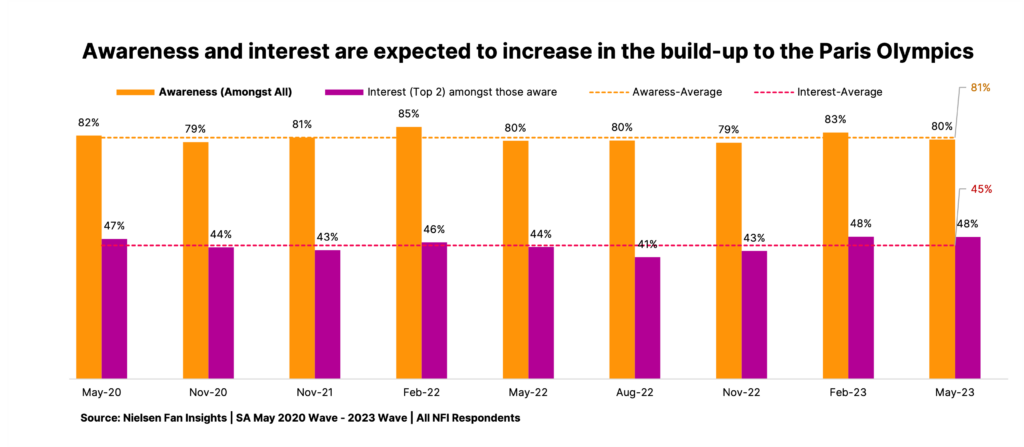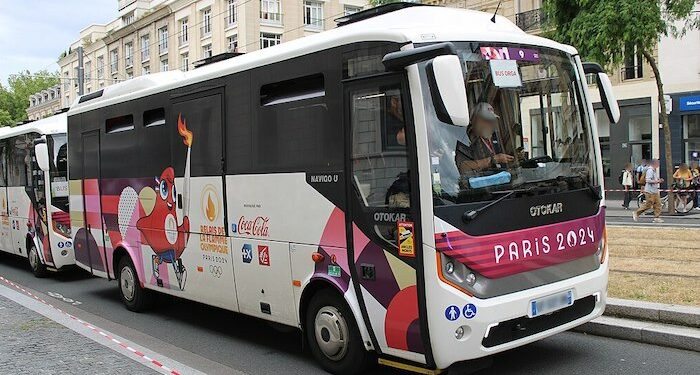South Africa’s history at the Olympics reads like a long love letter from a sports-mad nation. Since we first competed in 1904, our athletes have won 89 medals, including 27 golds.
When we hear familiar names like Chad le Clos, Caster Semenya, Penny Heyns and Tatjana Schoenmaker (now Smith), our collective pride shines through, happily bypassing any tensions or challenges our country faces.
The Olympic rings are universally recognised, representing excellence, unity and the pursuit of dreams. This year, our team heads to Paris to fly our flag once again, and the nation will be glued to their screens, rooting equally for our frontrunners – including former medallists like Tatjana Smith and the Blitz Boks – and rising stars like Prudence Sekgodiso, touted to follow in Caster Semenya’s footsteps in the 800m race.
The Olympics attract a massive global audience, presenting a golden opportunity for local brands to expand their national and international market reach.
By aligning with the country’s zeitgeist and creating messaging that resonates with the fans’ mindset, advertisers and sponsors can go for gold. This is an opportunity to enhance the experience for local audiences, tap into new markets or even forging international partnerships to drive export growth.
Investing in the national consciousness
Bidvest has taken this year’s spot as the Official Partner of Team SA for the Paris 2024 event. With careful planning, creative marketing and a strong focus on feel-good storytelling, other local companies are also lining up to leverage the Olympics to achieve significant brand growth recognition.
Sponsorship deals, athlete endorsements, limited-edition Olympic-themed products, broadcasting banners, squeeze backs; all can significantly enhance brand visibility and affinity.
According to Nielsen SA Fan Insights, 81% of South Africans are aware of the Olympics, and 45% express interest, showcasing the event’s broad appeal and potential for high engagement.

Digging even deeper, Nielsen Sports InfluenceScope highlights the most influential and watchable athletes, giving brands powerful insights into which events and personalities offer the best alignment opportunities and reach.

The Olympic effect: The power of storytelling
The Olympics provide fertile ground for inspiring stories of athletes overcoming challenges and achieving greatness. These compelling narratives provide the perfect platform to connect with consumers on a deeper emotional level. Fantastic tales of perseverance, dedication and triumph are made here – and they shape brand identities in the long term.
What makes the Olympics so appealing is its multifaceted appeal. Pre-World War 2, African American Jesse Owens snatched the Gold Medal for the long jump – right in front of Adolf Hitler at the 1936 Games in Nazi-ruled Berlin.
In the early 1980s, boxing fans watching the Junior Olympics saw history in the making when controversial boxing legend Mike Tyson won every fight by knock-out – breaking a record for the quickest Junior Olympic knock-out ever (eight seconds).
In 1984, the world was at odds following a collision between South African Zola Budd (representing Britain in the Apartheid era) and fellow athlete Mary Decker Slaney. Throughout Olympics history, stories – both uplifting and scandalous – have captured the attention of millions.
The Games’ first outing as currency for participating brands came in the 1960 Rome Olympics – the first to be televised. This historic event was also the first to include a brand endorsement by an athlete – the beginning of a relationship between brands and sports events that has blossomed over time and is an invaluable vehicle for brands to connect with people worldwide.
Nielsen Sports SA data reveals that the 2020 Tokyo Olympics – which took place in 2021; a historic postponement due to the pandemic – saw live and secondary broadcasts of the Summer Olympics reaching one-third of the total linear TV universe, making it the second-highest most watched event in 2021, attracting a diverse audience nationally in South Africa and three billion worldwide, according to the International Olympic Committee.
The South African state of mind
South Africa – and by association, local audiences – are unlike any other consumers in the world. We are all commonly affected by exclusively local factors like load shedding and regional politics. The country is among the top three nations with the most official languages in the world and is truly one of the most diverse places on the planet.
For all our quirks and differences, however, sport is the common denominator that unites people from all nine provinces – regardless of their home language. The recent AFCON soccer tournament broke viewership records, exceeding those of the 2023 Rugby World Cup, which saw the South African national team’s record-breaking fourth World Cup victory.
Brands that couldn’t capitalise on those groundbreaking events still have many upcoming opportunities to connect with consumers. Nielsen Fan Insights data proves that the Summer Olympic Games enjoy a consistent level of awareness and interest amongst South African viewers, with peak top-2 interest levels indicated at 48% in February and May 2023.
The build-up to the Summer Olympic Games, being held in Paris from 26 July to 11 August 2024, saw awareness and interest levels increase beyond the current 81% and 50%, respectively, over 10-12 months.

It’s important to note that the Olympics have more staying power with viewers than many other sports events. Interest levels in the 2020 Olympics remained high for a prolonged period even after the event ended, as seen in Nielsen Fan Insights data, which showed interest peaking six months after the last Summer Olympic Games event.
A market primed for growth
The recent Olympic Marketing Fact File, 2024 Edition, shows a substantial increase in media spending and sponsorship revenue for this global event, highlighting its continued appeal and advertisers’ adaptability to changing consumer habits. And overall, global advertising spending is expected to reach a record high in 2024, driven by events like the Olympics and the US Presidential election.
Sponsors, brands and fans keep flocking to the event, encouraged by rising online streaming platforms and social media spending – driving more creativity and diversity in advertising. Streaming platforms have unlocked new opportunities for targeted advertising, moving away from one-size-fits-all approaches, allowing brands to target younger audiences like Gen Z with campaigns that align with their values.
Small-to-medium brands are no longer excluded at a local level, because online platforms tend to offer more accessible pricing.
Additionally, brands are increasingly partnering with individual athletes for influencer campaigns to reach wider audiences on social media. This year, the Olympics are also expected to focus more on sustainability, which may attract advertisers looking to align their brands with environmental and social responsibility.
Food for thought
While the Olympics offer immense potential, brands must approach this opportunity strategically. Securing sponsorships can be costly, and competition for consumer attention will be fierce. Creative, data-driven marketing campaigns and careful planning are essential to maximise return on investment. Additionally, brands must ensure their Olympic involvement aligns with their values and resonates authentically with consumers.
For the inside track on fan data and a revealing peek into how they think, why they cheer and where they live, Nielsen Fan Insights brings together a unique combination of data sources delivered in a single connected platform.
Armed with the knowledge your brand needs to go for Olympic Gold.
Let the games begin!

As the results-driven chief operating officer of Nielsen Sports SA, Amy Daley maximises sponsorship ROI through data-driven insights, streamlined operations and a commitment to fostering a growth-focused team culture.
CLICK ON THE COVER TO READ THE MEDIA MAGAZINE’S AGENCY ISSUE















